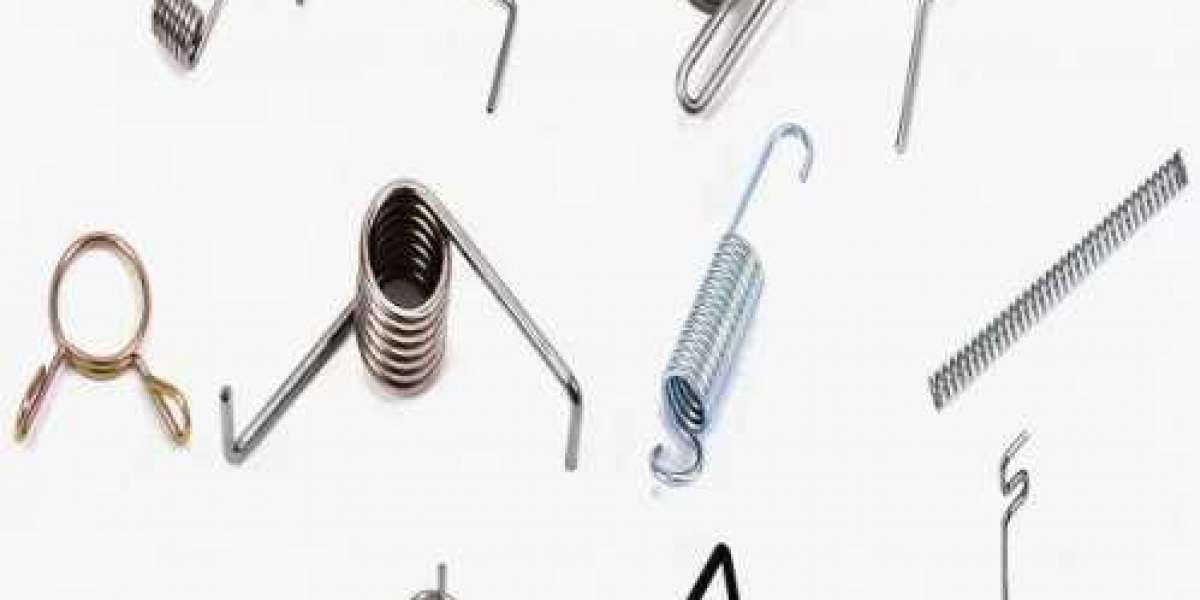Springs are one of the most essential components in a wide range of mechanical systems and devices. They may seem simple at first glance, but their roles in absorbing energy, maintaining tension, or providing force are vital to the function of countless everyday objects. In this blog post, we'll dive into the types of springs, their functions, and the many applications they have across different industries.
Whether you're aware of it or not, springs are all around us, from the gadgets we use to the cars we drive. Companies like Ganlong-Flying, a professional manufacturer of precision parts and springs, play a key role in ensuring that high-quality springs are produced for various industries. With years of experience in CNC precision machining and manufacturing, Ganlong-Flying provides springs that are integral to products in fields ranging from telecommunications to medical devices.

Types of Springs
There are several different types of springs, each designed for specific functions and applications. The most common types include:
Compression Springs
Compression springs are designed to resist compressive forces, meaning they are compressed when a load is applied. These are typically the springs you’ll find in items like pens, mattresses, and car suspensions. They’re coiled and provide resistance when compressed, making them ideal for applications requiring force exertion.Tension Springs
Tension springs, also known as extension springs, are designed to absorb and store energy when stretched. These springs are commonly used in mechanisms that need to pull objects together, such as in trampolines, garage doors, and certain mechanical assemblies. Tension springs work by resisting forces that try to elongate or stretch them.Torsion Springs
Torsion springs are designed to resist twisting or rotational forces. They work by rotating around a central axis, storing energy when twisted. These springs are commonly used in devices such as clothespins, garage doors, and even the mechanism in watches. The twisting force they provide is critical in applications where rotational motion is necessary.Flat Springs
Flat springs are made from a thin, flat strip of metal and are often used in applications requiring high flexibility and limited space. These springs can be found in applications like electrical contacts, clip mechanisms, and as part of the suspension systems in vehicles.Leaf Springs
Leaf springs are made up of multiple layers of metal plates stacked together. They are commonly used in vehicles, especially in older suspension systems, to absorb shock and support weight. Leaf springs are known for their ability to distribute loads evenly and are often used in heavy-duty machinery and trucks.
Functions of Springs
Springs serve several important functions in mechanical systems. The most common functions include:
Energy Storage
Springs are excellent at storing energy. When compressed or stretched, they absorb mechanical energy, which can then be released gradually. This ability makes them useful in a wide range of devices, including clocks, shock absorbers, and mechanical toys.Force Absorption
Springs help to absorb and dampen shocks or vibrations. In the automotive industry, for example, suspension systems use springs to absorb the impact of road bumps, providing a smoother ride. Similarly, in machinery, springs can be used to absorb forces that would otherwise cause wear and tear on the components.Maintaining Tension or Compression
Springs maintain a constant force or pressure in a system. This is essential in mechanisms like door latches, vehicle suspensions, or even washing machines, where a constant force is required to operate the device smoothly.Control Movement
Springs are often used to control or limit movement within mechanical systems. For example, in vehicles, springs help regulate the movement of the suspension system, controlling how far the wheels move up and down. In other applications, springs can help control the rate of motion in mechanical systems, such as in dampers or tensioners.
Applications of Springs in Everyday Life
Springs are used in nearly every facet of daily life, from the appliances we use to the cars we drive. Here are just a few of the many applications:
Automotive Industry
Springs are crucial in automotive suspensions, ensuring smooth rides by absorbing shocks and maintaining vehicle stability. They’re also used in the engine, brake systems, and various other components to ensure optimal performance.Telecommunications and Electronics
In the tech world, springs are used in devices such as mobile phones, servers, and audio equipment. Ganlong-Flying provides springs that are used in IT, telecommunications, and audio equipment, ensuring that the components are reliable and high-performance. Springs can help maintain connections in devices, control power usage, and absorb mechanical stresses in delicate systems.Medical Equipment
Springs play a vital role in medical devices, from wheelchairs to diagnostic instruments. In medical equipment, springs are used to create mechanical pressure, store energy for movement, or control the mechanical motion in devices like syringe pumps and thermometers.Consumer Goods
Many everyday items, such as pens, toys, and appliances, rely on springs. Compression springs in pens allow the tip to extend and retract smoothly, while tension springs in toys can create exciting mechanical movements. Similarly, springs are key components in various household appliances like washing machines, refrigerators, and door mechanisms.Industrial Machinery
Springs are an integral part of industrial machinery, where they are used in heavy-duty applications like presses, assembly lines, and large-scale manufacturing equipment. Whether it’s in conveyor systems or as part of shock absorbers in industrial settings, springs provide the necessary force control and energy storage for these systems to function effectively.
Why Choose Ganlong-Flying for Your Spring Needs?
Ganlong-Flying has established itself as a reliable manufacturer of precision springs, with expertise in CNC machining and an extensive product range. Specializing in high-quality springs and other precision components, Ganlong-Flying serves industries like telecommunications, automotive, medical devices, and more. Their springs are used in a variety of applications where precision, durability, and performance are crucial.
With over two decades of experience, Ganlong-Flying ensures that their products meet the highest standards of quality. Whether you need compression springs for automotive suspensions or tension springs for consumer electronics, their custom manufacturing process guarantees that each spring is built to your exact specifications, helping businesses improve the reliability and performance of their products.
Conclusion
Springs are essential components found in countless applications, from automotive systems to medical equipment, and are crucial in maintaining function, stability, and performance. Whether you’re building a high-tech device or designing a mechanical system, understanding the types, functions, and applications of springs is vital to creating effective and reliable solutions.
For businesses seeking high-quality springs, Ganlong-Flying provides expert manufacturing, design, and support to meet the diverse needs of various industries. Their dedication to precision and innovation ensures that every spring delivers the performance required for even the most demanding applications.








